You can easily take amazing pictures of the Milky Way or the moon with your smartphone in 2025. But what phone has the best camera for this?
We believe that the Google Pixel 10 Pro is the best phone for astrophotography in 2025. It is the only top-range smartphone to feature a native astrophotography mode that makes it extremely to capture amazing night photos.
The Samsung Galaxy S25 Ultra is also excellent. It has the highest resolution at 200 megapixels and great in-built camera modes that give you the capacity to take amazing photos of the starry night sky. It also offers a dedicated Astro Mode via the Expert RAW app.
The latest Apple iPhone 17 Pro, is also fantastic and the night mode has been shown to produce some amazing Milky Way captures.
These are the best smartphones for astrophotography in 2025. See below for quick links, or read on for more detailed pros and cons.
|
Make & Model:
Google Pixel 10 Pro
|
Make & Model:
Samsung Galaxy S25 Ultra
|
Make & Model:
Apple iPhone 17 Pro
|
|
Resolution:
50 MP
|
Resolution:
200 MP
|
Resolution:
48 MP
|
|
Modes:
Astrophotography, Night
|
Modes:
Night, Pro, Astrophoto (via Expert Raw app)
|
Modes:
Night
|
Google Pixel 10 Pro
Best Smartphone for Astrophotography
The Google Pixel 10 Pro features one of the best cameras on the market and has a brilliant astrophotography mode.
It was released in 2025 alongside four other models in the Pixel 10 range – the Pixel 10, 10 Pro XL, and 10 Pro Fold.
Note the 10 Pro XL has exactly the same cameras as the 10 Pro, but is more expensive.
The 10 and 10 Pro Fold have slightly lower spec cameras, but are still really good (as are cameras from older Google Pixel ranges).
The main camera itself has a massive 50 MP (megapixels), a fast F/1.68 aperture, and a pixel width of 1.2 μm (this is the physical size of the pixels on the camera sensor – the higher the better for astrophotography as it means that more light is gathered per pixel).
There is also a separate ultrawide camera that operates at 48 MP that can work great for wide field-of-view landscape astrophotography images.
Google Pixel 10 Pro Astrophotography Mode
The in-built Pixel Astrophotography Mode is fantastic. It takes multiple 16-second images, stacks them, and processes them for you all in one go, usually taking about 4 minutes in total from one press of a button.
You can see the images below where I have tested the Pixel astrophotography mode on an older Pixel phone and compared it with an image taken with a good DSLR camera of the same scene on the same night.
The first image on the left below shows a picture taken of the Milky Way core with a Google Pixel 3a smartphone using the astrophotography mode, and in contrast, the second picture on the right was taken on the same night using a modern DSLR camera (a Nikon D750):
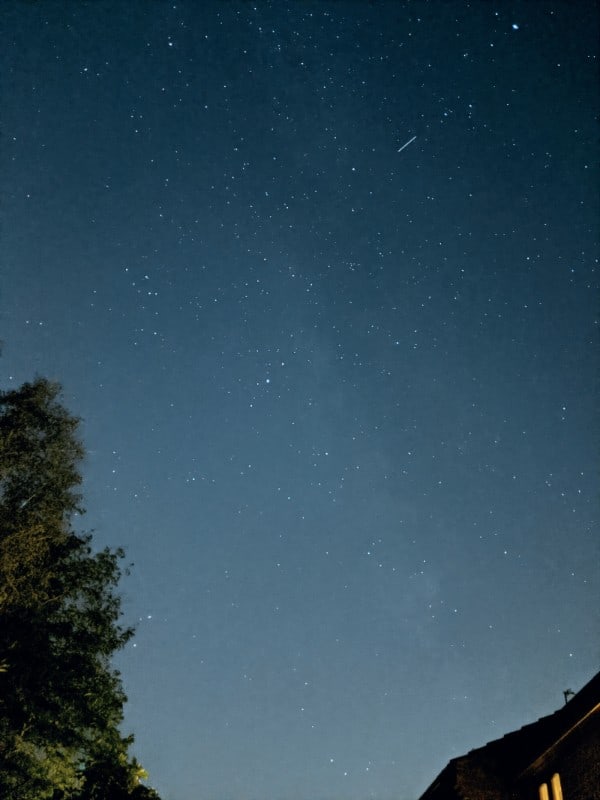
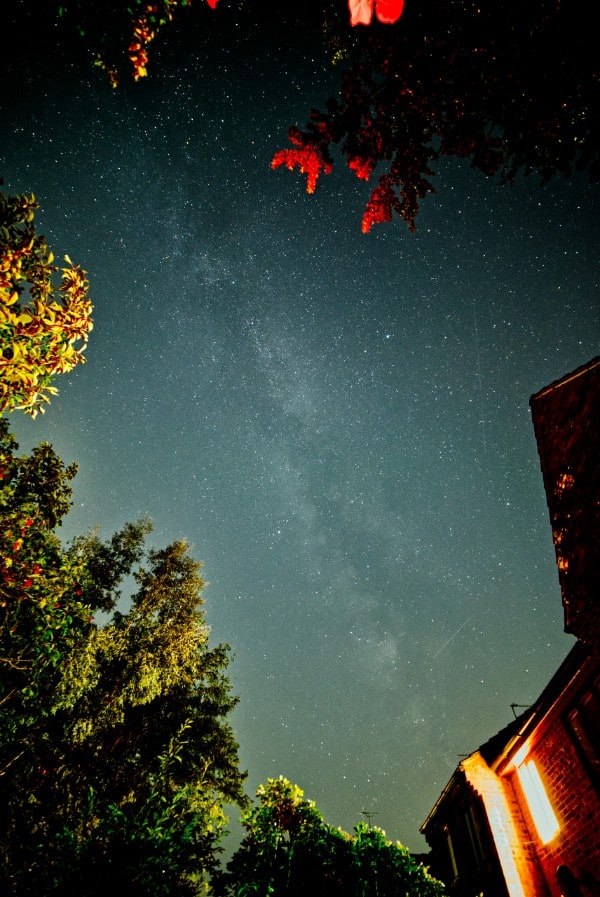
This is in a fairly light-polluted (Bortle 5) suburban area but there are two main conclusions to draw from these images:
- The Pixel Astrophotography image is pretty good. It has captured lots of sharp stars and the core of the Milky Way can be seen spread across the sky even with light pollution. No additional post-processing was done and it was literally taken with the press of a button with no need to adjust and master the settings
- The image with the DSLR is better. However, this was taken with a fairly advanced camera and lens, and the image was tweaked in post-processing and I had to configure the settings myself.
Another caveat is that this first image was taken with an older Pixel model (the 3a) with a lower-spec camera than the up-to-date Pixel 10 Pro.
You can see here an example of a great Milky Way image taken with the Google Pixel 8 Pro:
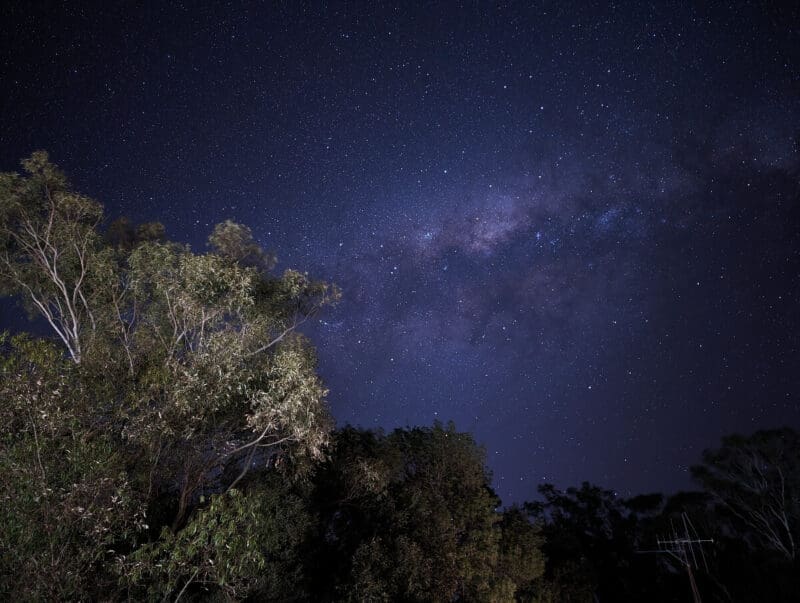
As you can see, the Google Pixel smartphones can really perform for astrophotography and we believe it is the best smartphone for astronomy photography overall.
In addition, it has an astrophotography timelapse function that no other smartphone camera has.
Pros:
- Features amazing in-built Astrophotography Mode
- Has Astrophotography Timelapse Mode
- Cheaper than Samsung S25 Ultra and iPhone 17
Cons
- Lower megapixel count than the Samsung S25 Ultra
Key Specifications
- Camera Resolution: 50MP (48MP when ultrawide)
- Aperture: ƒ/1.68
- Field of View: 82° (123° ultrawide)
- Pixel Width: 1.2μm
- Astrophotography Mode: Yes
- Weight: 207 grams (7.3 ounces)
- Size Dimensions: 6 inch (height) x 2.8 inch (width) x 0.3 inch (depth)
- Screen Size: 6.3 inches
- Screen Resolution: 1280 x 2856
- RAM: 16 GB
The latest Google Pixel smartphone
- Outstanding Astrophotography Camera Mode
- 50 MP Camera Resolution
- Advanced in-built Google AI
Samsung Galaxy S25 Ultra
Highest Megapixel Smartphone Camera
Boasting a whopping 200 megapixels, the Samsung S25 Ultra has the highest resolution smartphone camera on the market.
It has a night mode that is great for low-light photography and works well for very easy astrophotography, but it also has a great manual/pro mode that enables you to take control of the settings and really make the most of the camera for astrophotography.
Samsung S25 Ultra Astrophotography
If you watch this video you can see some pretty amazing astrophotography images taken with the previous S24 Ultra:
Here’s an example Milky Way image to show you what you can achieve:
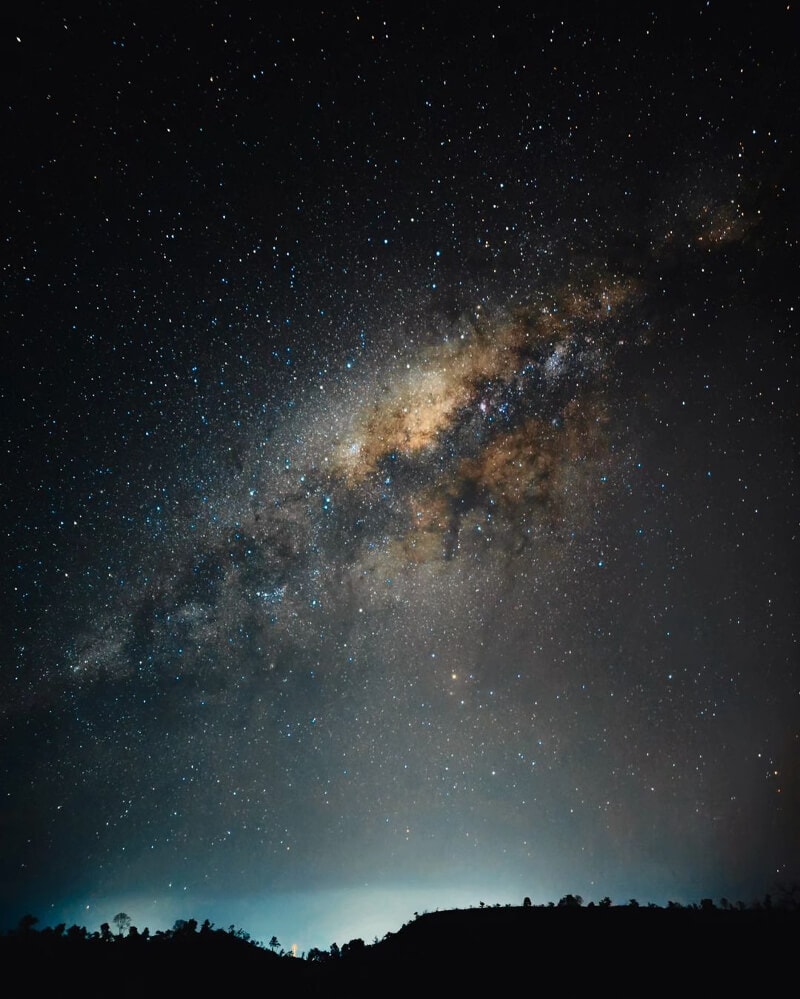
It has the highest megapixel count of any smartphone and while on some other specs (pixel width, aperture, astrophotography modes) it might seem behind the iPhone 17 and Google Pixel 10, it has been shown to produce results every bit as good.
Samsung Galaxy AstroPhoto Mode
Samsung Galaxy’s Astrophoto Mode is a special feature within the Expert RAW app.
It enables long exposures of up to 10 mins and image stacking to bring out faint stars and galaxies.
You access it by opening Expert RAW, going to Settings > Special photo options (or Expert RAW Labs), enabling it, and then shooting.
Pros
- Astonishing 200 Megapixel Camera
- Night Mode for easy astrophotgraphy
- Pro Mode available when you need more control
- Long Battery Life
Cons
- Expensive
- No specific Astrophotography Mode
Key Specifications
- Camera Resolution: 200MP (12MP ultra-wide and 10MP telephoto)
- Aperture: F/1.7
- Field of View: 85 degrees (120 degrees when ultrawide)
- Pixel Width: 0.6μm
- Astrophotography Mode: Night Mode
- Telephoto Lens: Yes
- Weight: 0.5lbs (0.2kg)
- Size Dimensions: 162.3 x 79 x 8.6 mm (6.39 x 3.11 x 0.34 in)
- Screen Size: 6.8 inches
- Screen Resolution: 1440 x 3120
- RAM: 12GB
The latest and greatest Samsung Galaxy smartphone
- Huge 200MP camera resolution
- Great Night Photography Mode
- In-Built Galaxy AI
iPhone 17 Pro
Best iPhone for Astrophotography
The latest Apple iPhones are the iPhone 17 Pro and the iPhone 17 Pro Max.
The difference with the Pro Max is the larger handset size and display screen, as well as a telephoto lens with 5x zoom capacity, rather than the 3x for the smaller iPhone model.
iPhone 17 Pro Max Astrophotography
The camera does not have an astrophotography mode but does have a night mode that works for astrophotography.
You can see how it works and what results you can get in this video:
Here’s a Milky Way image:
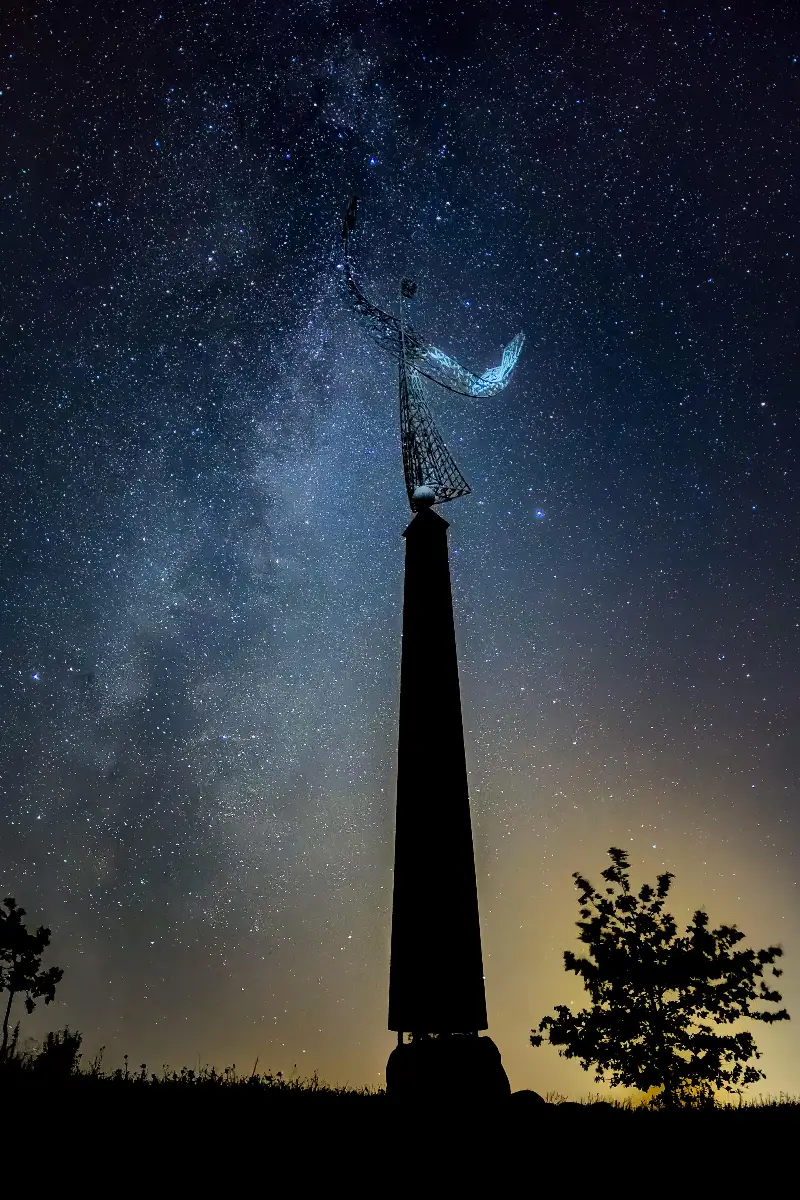
Overall, the iPhone 17 Pro Max camera is excellent and can definitely perform for astrophotography using the night mode.
Although it has a lower megapixel count than the Samsung S25 Ultra on this page, it does have a faster aperture and the highest pixel width on its camera sensor and this helps it deliver for night photography by better gathering light in dark conditions.
Pros
- Trusted Apple iPhone with the best iPhone camera yet
- Night Mode that excels for Astrophotography.
Cons
- Expensive
- No specific Astrophotography Mode
- Lower megapixel count than the Samsung S25 Ultra
Key Specifications
- Camera Resolution: 48 MP
- Aperture: F/1.5
- Field of View: 69 degrees (120 degrees when ultrawide)
- Pixel Width: 1.9 μm
- Astrophotography Mode: Night Mode
- Telephoto Lens: Yes
- Weight: 0.45 lbs (0.2 kg)
- Size Dimensions: 5.8 x 2.8 x 0.3 inches (146.7 x 71.5 x 7.7 mm)
- Screen Size: 6.1 inches
- Screen Resolution: 2778 x 1284
- RAM: 6 GB
The latest Apple iPhone
- Great wide-angle camera
- Night Mode for astrophotography
- 48 megapixel resolution
Google Pixel vs iPhone vs Samsung Galaxy for Astrophotography
The astrophotography mode on the Google Pixel and the night mode on the iPhone and Samsung Galaxy do very similar things:
- The Pixel astrophotography mode takes multiple 16-second images, stacks and processes them
- The iPhone night mode takes three 10 second images, stacks, and processes them
Both are excellent, but in tests the Google Pixel is better for astrophotography overall as you can see in this video:
The only real downside to the Google Pixel Astrophotography mode is that it only pops up as an option to use once your phone is pointed at skies that the phone deems dark enough.
Therefore if the phone detects too much light then it won’t even let you try, even if you want to.
FAQs: Best Phones for Astrophotography
What are the best budget smartphones for astrophotography?
The three models listed above are all premium options that have the best cameras, however you can have a lot of success with some more budget friendly smartphones.
This image below was taken with a Xiaomi Rednote 13 Pro by astrophotographer Mihail Minkov:
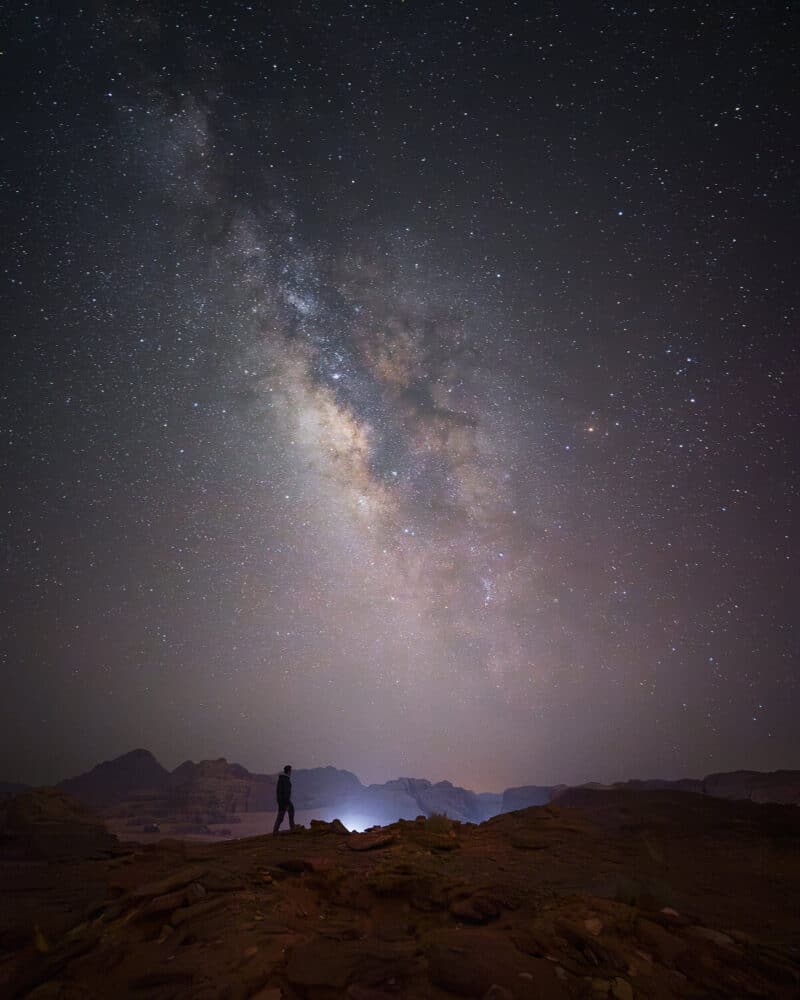
Alternatively a good option is to go for an older (and/or refurbished) model from the Google, Samsung or Apple ranges.
Smartphones vs DSLRs for astrophotography
Smartphone cameras are getting better and better and the megapixel count is rising but the sensors in camera phones are much smaller than those in modern DSLR or mirrorless cameras and so will not be able to perform as well.
Therefore, DSLR/mirrorless cameras are still better but the gap is closing and obviously just using a phone has a serious convenience advantage.
Plus learning to use a DSLR or mirrorless camera for astrophotography is much harder than just pressing a button on a smartphone.
See above in the Google Pixel 8 Pro section an example comparison of smartphone vs DSLR astrophotography.
What phones have astrophotography modes?
The Google Pixel range are the only smartphones that have dedicated astrophotography modes.
However, other cameras have great night modes (and moon modes) that can be utilized effectively for astrophotography.
Can you do astrophotography with an iPhone?
Yes, iPhones have great cameras and night modes that can be used for astrophotography. See our guide on how to do iPhone Astrophotography.
Which phone is best for moon photography?
Many phones are great for moon photography but the Xiaomi Redmi Note 13 Pro and the Huawei P40 Pro have moon modes specifically for lunar imaging.
Note, there has been some skepticism about how the Huawei moon mode works (some believe it actually inserts a separate moon image into your photo, rather than using your capture – see here).
The Samsung S23 Ultra also raised some eyebrows with it’s moon photography – see here.
How do you take a perfect moon picture with your phone?
The Vaonis Hestia is a device released in 2024 that specifically enhances your smartphone’s astrophotography capabilities – particular for lunar and solar imaging.
See our review here or check prices below.
Transform Your Smartphone Into A Smart Telescope
- Extremely easy to use - just attach your smartphone and allow the app to guide you to capture and process astrophotography images
- Compact and portable
- Future-proof with all smartphones compatible
- No tracking will limit capacity to capture deep sky images
- Small aperture compared to a telescope
You can also use a telescope or telephoto lens to take a photo of the moon with your smartphone.
What is stacking in astrophotography?
Stacking is a process where multiple images of the same scene are taken and then layered on top of each other. This removes the noise and produces a better image.
The Astrophotography Mode in the Google Pixel smartphones takes care of stacking the images automatically.
Conclusion: Best Astrophotography Camera Phone
Overall, we recommend the Google Pixel 10 Pro as the best overall smartphone for astrophotography due to its excellent in-built astrophotography mode.
The Samsung Galaxy S25 Ultra is also excellent. It has a huge resolution of 200 megapixels and great in-built camera modes that give you the capacity to take amazing photos of the starry night sky.
If you want to know more about smartphone astrophotography, check out our video:
Sources:
- https://blog.google/products/pixel/google-pixel-8-pro/
- https://www.gsmarena.com/google_pixel_8_pro-12545.php
- https://www.apple.com/shop/buy-iphone/iphone-15-pro/6.7-inch-display-256gb-black-titanium
- https://www.gsmarena.com/apple_iphone_15_pro_max-12548.php
- https://www.samsung.com/us/smartphones/galaxy-s23-ultra/
- https://www.gsmarena.com/samsung_galaxy_s23_ultra-12024.php
- https://www.mi.com/global/phone/
- https://www.gsmarena.com/xiaomi_redmi_note_11_pro-11334.php
- https://consumer.huawei.com/en/phones/
- https://www.gsmarena.com/huawei_p40_pro-10152.php


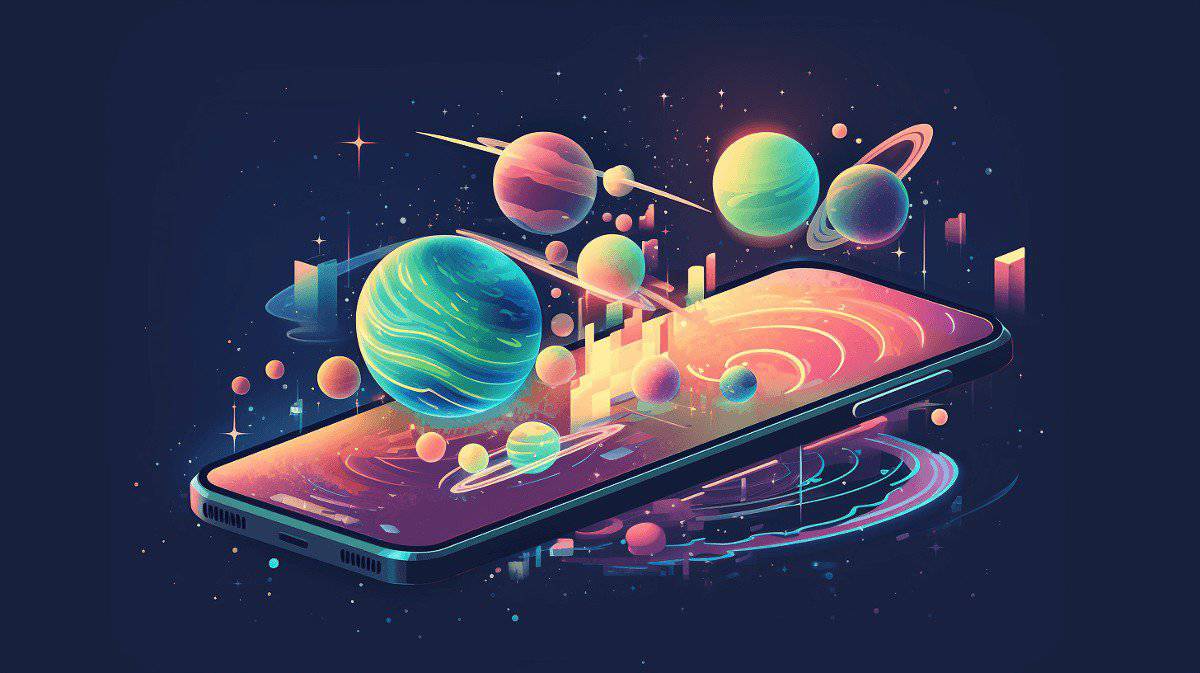


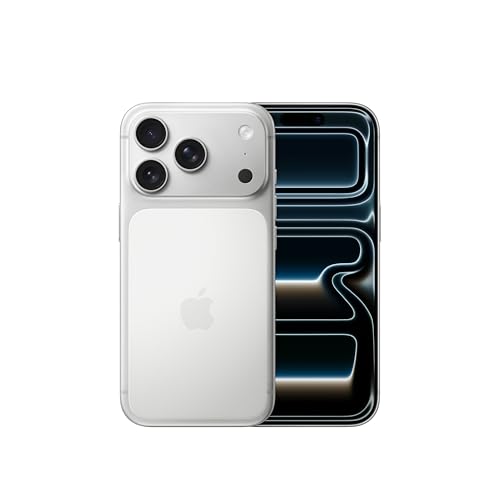



You can stack the images to reduce the noise using an android app called Eagle image stacker which is align and stack the astronomical images.
Cool! Thanks for the tip.
Why don’t mobile phone cameras have a bulb function so that you can keep the aperture open for as long as you like. Seems like it would be an easy thing to do.
I don’t know, but that’s a great question!
Hi I’m Paul C vice president of the Ayrshire astronomical society – I have been using Google pixel phones for over 5 years for astrophotography as well as Samsung ultras and I phones – in my opinion the pixel 6 and newer models are substantialy better than their rivals , sharper , lower noise and easier to operate
Often the new generation of I phones / Samsung have larger sensors and more pixels but what you actually want is larger individual pixels – rather than the number of pixels – this helps keep noise lower and increases contrast in low light
Kindest regards
Thanks Paul!
Great article, but I think someone needs to a better job at proofreading this it. In the begining, it states “the Google Pixel 9 is the best phone for astrophotography in 2054”. Did I fall into a coma and wake in 2054?
Then, when talking about the Galaxy phone, it shows a picture with this caption, “Milky Way image shot with a Samsung S23 Ultra” . Then, under the photo the article goes on the say: “As you can see, the Samsung S24 Ultra is excellent for astrophotography.”
I’m pretty sure, I knew what you were talking about, but, me being me, I just had to say something.
Thanks Dan – Genuinely appreciate the feedback (and will fix the typos!)
Great article. It inspired me to grab my old Samsung Galaxy Ultra 22. I found that Samsung provide an app called Expert Raw. This app is not installed by default. It has an astro mode where images can be stacked etc….
Cool. Thanks Tony